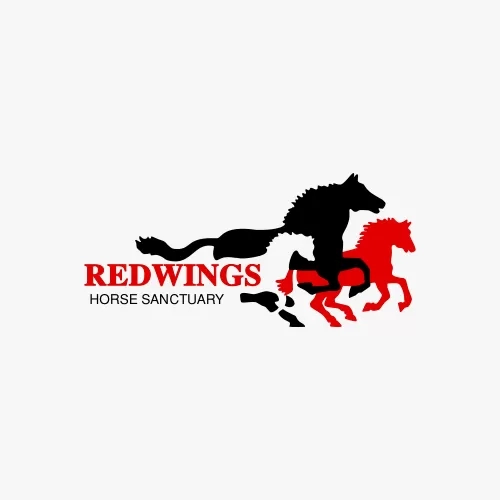23 October 2016

A British winter can present a wide variety of weather conditions; from gales and driving rain to hard frosts and snow. Many horses are kept outside all year round and need to be able to cope whatever the weather. There are a lot of factors to consider when assessing to what extent a horse can withstand the change in season and how the winter might be made more comfortable. Let's explore this in more detail:
Natural hardiness and weight fluctuations
The breeding of a horse or pony plays a significant part in how its body manages in different weather conditions. Horses and ponies that are native to Britain have evolved with a hardiness that makes them able to cope with relatively severe winter weather.
One feature of how the horse is adapted to its natural environment is related to the way its weight fluctuates in relation to the changing seasons. Like many other mammals, the horse is designed to enter the winter season with more fat reserves to act as energy stores that can be tapped into to help them cope with the harsher weather and poorer quality grazing.
It is important to monitor weight regularly all year round, however in winter you will need to check that your horse or pony does not drop below an ideal body condition. A thin horse will feel the cold and use up stored fat to maintain its bodily warmth, thereby losing more weight. Horses in work will need even more food as they will also be using up energy to carry out their tasks.

Breeds from warmer countries, such as Thoroughbreds and Arabs, are able to cope with hot summers, but are not as well equipped for cold winters. They do not use their nutritional energy as efficiently and do not tend to store so much fat or grow such a thick winter coat as British breeds.
Many owners of warm or hot blooded horses tend to stable them overnight as shelter from the weather. Even in a stable, they will need a rug and additional energy in the form of extra feeds. There is no reason, however, why even a pure bred Arab or Thoroughbred cannot live out all year round with appropriate care. By providing a field shelter, a good quality winter rug and a well thought out diet, the balance between energy intake and energy output should be manageable throughout the colder months.
Pasture management
As a horse owner, it is important to ensure that you have sufficient grazing all year round, but unfortunately, horses are heavy animals with feet that quickly churn up soft ground. There are various ways you can try to manage your land to minimise the damage, which include:
• Resting an area of pasture over winter to ensure good grazing for spring/summer. Either reserve a separate field or use electric tape to cordon off an area that your horse can enjoy once the ground has dried out and the grass is growing again in the spring.
• Putting drainage in the most used areas of the field, which tend to be near the gate, in front of field shelters, and around hayrings and water tanks. Straw can provide a temporary reprieve from deep mud, but hardcore, if laid well, will provide a more long term solution. Pick through whatever material is used to make sure there are no objects that could injure the bottom of the horse’s foot and avoid using flints or other sharp edged stone. Flatten the surface as much as possible to eliminate projecting edges. Even then, horses with very sensitive soles may refuse to walk over a hardcore surface and are happier in the mud!
• Putting down a straw pad (as long as your horse does not have a dust allergy), which can provide a comfy, dry area for eating hay or even snoozing. This will need completely removing in the spring and will kill the grass underneath so needs to be thought through first.
• Creating an all-weather turnout area. This is the most expensive option, but can be well worth the initial cost. Woodchip, shredded rubber or even concrete, if properly laid and fenced, can provide a safe, dry area that can be useful on many occasions, not just in winter. These are particularly useful for horses who suffer from arthritis or mud fever. A very hard area, such as concrete, should always be supplemented with some straw, shavings or other softer area to allow a horse to lie down comfortably and safely when it wants. Muddy ground will inevitably have very little grass on it and even without mud, grass will not grow when the temperature drops below 5°C. Most owners will compensate for the lack of grass by providing hay or barley straw and supplementary horse feed, if required.
Supplementary feeding
Many horses and ponies may not need additional hard feeds through the winter. In fact, around 80% of horses at Redwings are on a grazing and forage only (hay or haylege) diets and therefore do not receive any additional hard feeds.

Calculating the amount of feed and forage is done as a percentage of the horse’s overall body weight. It is either 2%, 2.5% or 1.5% of the horse’s body weight depending on whether it needs to maintain, gain or lose weight respectively. This is called the daily ration and it should be split between the forage (hay/haylege) and hard feed depending on the horse’s energy requirements and body condition.
You can find detailed guidance on how to calculate the daily ration for your horse or pony in our weight management advice and guidance Lightening the Load (PDF 973 KB). You can also contact us for a Body Condition Score card and advice on how to identify weight gain and weight loss in your horse by emailing education@redwings.co.uk.
Rugs
Different breed requirements go some way towards explaining why some horses are rugged and others not.
Age, health and living environment should also be taken into account when an owner decides whether or not to rug their horse. Some working horses will be clipped in winter to prevent them becoming uncomfortable when being ridden; these will certainly need a rug to compensate.
Alternatively, a horse that is able to cope well in cold temperatures may become uncomfortably hot if rugged unnecessarily and horses in general find it difficult to cool down once they become overheated because their bodies are so efficient at keeping the heat in.

Over-rugging is becoming a problem for leisure horses in the UK. As rug technology has improved drastically in the last few years and while winters have been milder, many horses are not burning their summer fat stores and therefore go into the new grazing season without having lost the weight they would lose naturally.
This is partly to blame for high levels of obesity in the UK’s pony population and the challenge for owners is to know when to rug in accordance with their horse’s individual needs, exercise levels and weather. This means regular monitoring and avoiding the temptation to slip rugs on unnecessarily or getting into the habit of leaving a rug on without considering how seasons may have changed or how much more effective your new rug may be.
Ideally, rugs should be removed once a day to check underneath. If the horse has sweated in the rug (which can easily happen if they have a quick charge about or the sun comes out), the humidity can lead to skin problems. Natural hair loss will also gather under a rug, and can become itchy and unpleasant. Removing the rug gives the body and inside of the rug a chance to breathe and allows the owner to check that all is well underneath. It is harder to tell if a horse has lost or gained weight underneath a rug and removing it is the only way of checking that everything is as it should be.
Water
Whereas humans tend to drink more water on warm summer days, horses can actually drink more in the winter if they are eating dry food like hay and concentrates, rather than grass which is around 80% water.
Meanwhile frosty nights can freeze water and leave horses without water for several hours leaving the horse at risk of dehydration and less able to cope with the winter weather. The first job any owner should do every morning is to check and break ice on water troughs and buckets. It’s important to also check them regularly throughout the day if the temperature stays low.
Shelter
A man-made shelter should be provided and erected by a professional to ensure that it is safe and able to withstand strong winds. It is worth checking your shelter annually, before the winter season – when your horse is likely to be spending more time there – for any maintenance it might need.
It’s important to remember that shelters should be cleared of droppings every day, just like a stable, as part of management against worms and ensuring all-round good health. An area of clean bedding will make it more comfortable if the horse wants to lie down.

Common winter ailments
People are often concerned about a condition called ‘mud fever’ that affects the horse’s legs and is especially associated with skin being exposed to bacteria that is naturally present in the soil. Mud fever is a nasty condition and can be very difficult to treat completely when it has taken hold.
A horse with muddy legs will not necessarily get mud fever, however, and many horses can spend all winter in muddy ground without a problem – while other horses only have to look at a dirty puddle to be afflicted! Some horses seem to have more sensitive skin and be prone to the condition, but as always prevention is much better than cure.
Your horse this winter
By learning a bit more about horses and how their breeding affects their ability to adapt to the elements, owners will be able to assess when a horse is coping well in their living environment (even if it doesn’t look very pretty!) and when they need help.

Redwings Press Office
Find out more about Redwings Press Office



